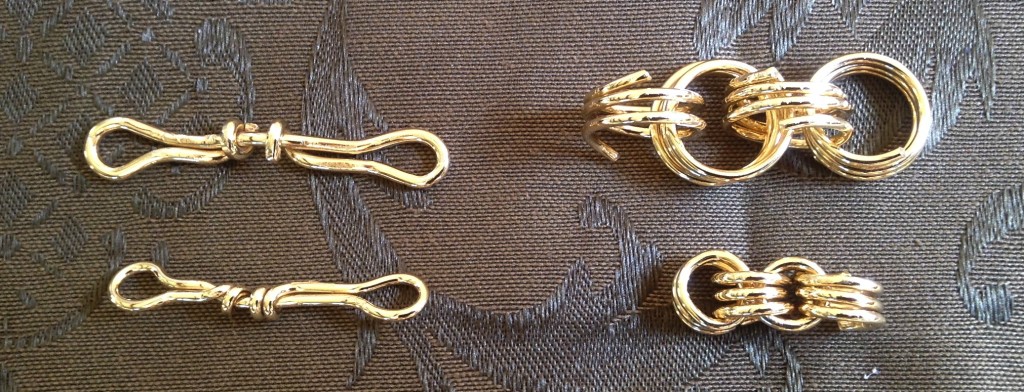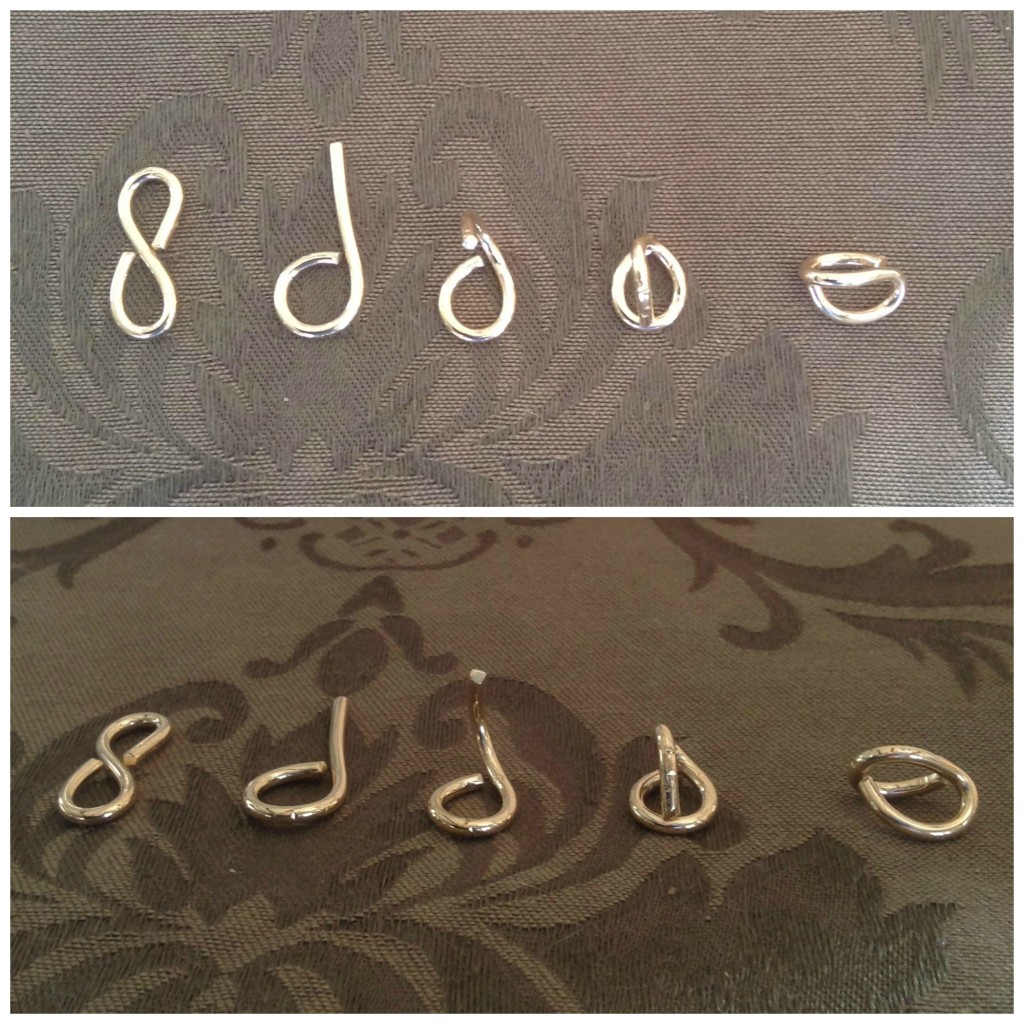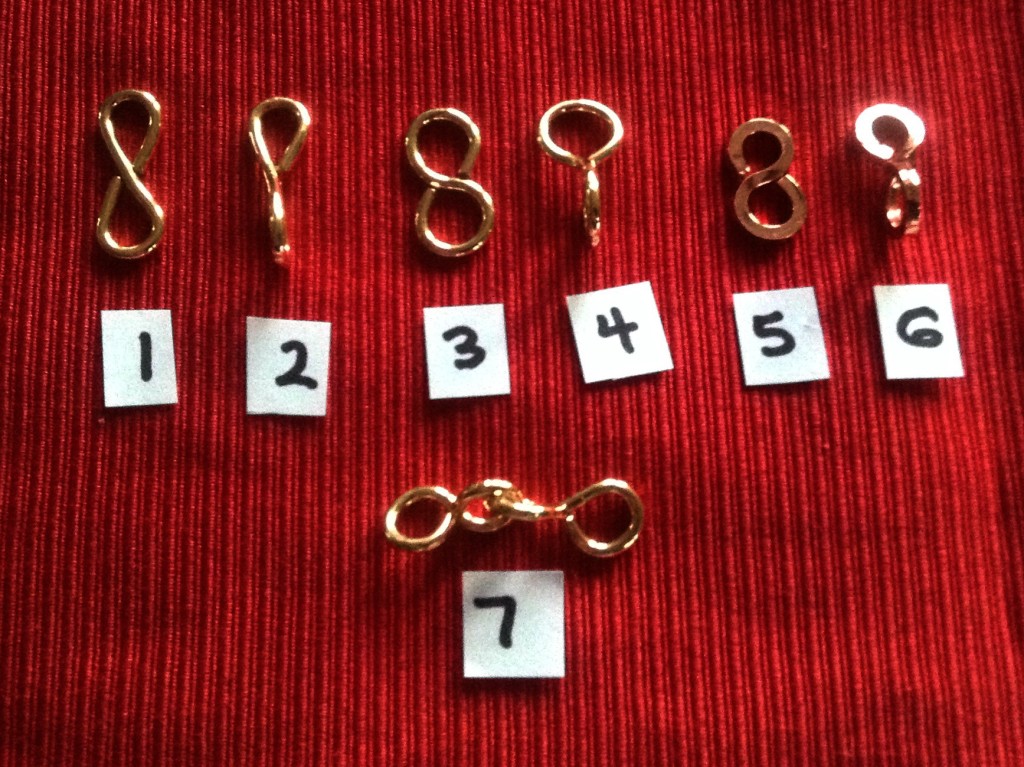Chains. We have talked about a bunch of the basics. Cutting links correctly with modern tools so that they have nice flush joins. Round links. Cast links. Soldered links. Looped links. Squished figure eight links with extra spiral coils. Figure 8 shaped links. Twisted figure 8 links. 3 D links.
There are probably a ton of other link forms out there. But two more forms really stand out in my mind. I have seen the first one used several times, although I would not consider it to be super common. Most of the pieces that I have seen have been utilitarian, and in fact I am not sure that I have ever seen the form used in piece of historical jewelry, although I don’t see why it couldn’t be. We do see the form used in jewelry all of the time when a bead is added to the center of the link. This piece from the Museum of London collection is an excellent example. It is a steelyard – a type of scale used for weighting things, in this case, pounds and 1/2 pounds. This one is Roman, found in Great Britain. The links on the steel yard are created by taking a length of wire, forming a loop at each end and winding the end of the wire towards the center of the link. If you will click on the “enlarge image” link the site will provide a nice big picture that will allow you to see the details of how the links are made. The longest chain (only two links) is a perfect demonstration of this technique. On the right link, you can see how the two loops are formed, and then the ends are twisted towards the center of the link.
The second type of link, is one that I have seen a lot in Viking Age chains. This is an excellent example from the Swedish National Museum. The chain was found in Gotland and dates to the Viking Age. These links are simply spirals. In fact every single link is a spiral.
While I have seen spiral link chains extensively in Viking Age jewelry in Sweden and Finnish jewelry (Remember that the Finns are NOT Vikings. They speak a different language and have different mythology.) I have really NOT seen a lot of these spiral link chains outside of this area.
The Finns were always particularly fond of spirals in their clothing decorations and were famous for their elaborate Bronze Age dress spiral decorations. This reproduction of an Iron Age Mantle shows the same basic type of spiral decoration that we see in the Bronze Age.
This example of an early Medieval Finnish woman’s jewelry kit shows the use of spiral chains beautifully. Generally speaking the Finns used a lot more chains than they did strands of beads. Whether this was due to the availability of glass beads, or a cultural value that says that chains were better, we may never know, but for them it was the more chains the better.
I made up examples of these two links in 14 gauge brass wire so that you could hopefully see the forms a little more clearly. I purposefully made the top row extra big, so that the structure of the wire form really shows. In the case of the left column I also formed the link slightly differently in each example. In the original artifact one of the links was formed with both of the links started on one side, like the top example. The other link had one loop started on one side of the mid-line of the wire and the other is formed on the other, creating a mirror image. If you look at the bottom example on the left you can see the advantage to the mirror image arrangement. If the coils around the center of the link are lined up, and there was no gap in the center, at least one side of the link would look seamless. The twisted part of the link could be made to look like it was one piece of wire.
The right hand column is the spiral in spiral link chain. The form becomes very clear when you make them extra big. The top version shows the form, while the bottom version shows something closer to what the original chain would have looked like a very long time ago.
I hope that this blog series inspires you to really look at all of the different types of chains that are out there!




